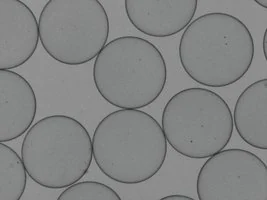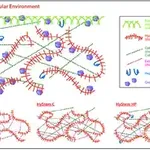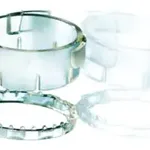
✨AI 추천 연관 상품
AI가 분석한 이 상품과 연관된 추천 상품들을 확인해보세요
연관 상품을 찾고 있습니다...
Cell-in-a-Box®
Cell Encapsulation Kit
사용
(up to 5 experiments, each creating ~120 capsules, each containing between 4,000 and 40,000 cells.)
저장 조건
room temperature
The Cell-in-a-Box technology is a means to protect, isolate, store and transport living cells. This novel, manual encapsulation kit is a modified version of Cell-in-a-Box which acts as an introduction to this novel and previously unavailable proprietary technology. This kit allows one to encapsulate cells using proprietary materials and methods that can be performed manually by any end user using a simple disposable system. The kit allows researchers to quickly and easily encapsulate their own cells for further laboratory studies such as testing for cell survival, viability, growth, and release of biomolecules.
The Cell-in-a-Box kit aims to replace the current methods of cell encapsulation which involve the use of large, expensive, and technologically challenging machinery. Often this is very rarely available to the average scientist in a research setting and far too expensive to purchase for initial experimentation. The unique encapsulation material also replaces commonly available encapsulation materials which have technological drawbacks. This kit version of Cell-in-a-Box represents a major leap forward in the cell encapsulation field that has remained largely stagnant for the past 30 years.
The components of The Cell-in-a-Box kit are non-toxic and biocompatible. The porous beads are approximately 2 mm in diameter and have a pore size which allows nutrients to enter and waste products and biomolecules as large as antibodies to leave the capsule unhindered yet cells are unable to pass in or out. The capsules entrap the cells securely within their polymer membranes, yet allow the cells to continue growing within the confined boundaries. Nutrients and secreted factors are able to diffuse and exchange through the membrane pores, which can be selectively tuned.
The durable encapsulation material is made of biocompatible cellulose-based material and can last for years in vitro and in vivo (although kit-made capsules are not designed for in vivo use) as well as contribute to longer cell survival periods. This kit can be tested with any kind of living cells. Encapsulated cells can be frozen, stored, and transported.
Since the proprietary cell packaging material used for the Cell-in-a-Box technology is derived from a naturally occurring material, it is thus harmless to the environment, biologically inert, and has been shown to be safe in humans.
배송/결제/교환/반품 안내
배송 정보
| 기본 배송비 |
| 교환/반품 배송비 |
|
|---|---|---|---|
| 착불 배송비 |
| ||
| 교환/반품 배송비 |
| ||
결제 및 환불 안내
| 결제수단 |
|
|---|---|
| 취소 |
|
| 반품 |
|
| 환급 |
|
교환 및 반품 접수
| 교환 및 반품 접수 기한 |
|
|---|---|
| 교환 및 반품 접수가 가능한 경우 |
|
| 교환 및 반품 접수가 불가능한 경우 |
|
교환 및 반품 신청
| 교환 절차 |
|
|---|---|
| 반품 절차 |
|





